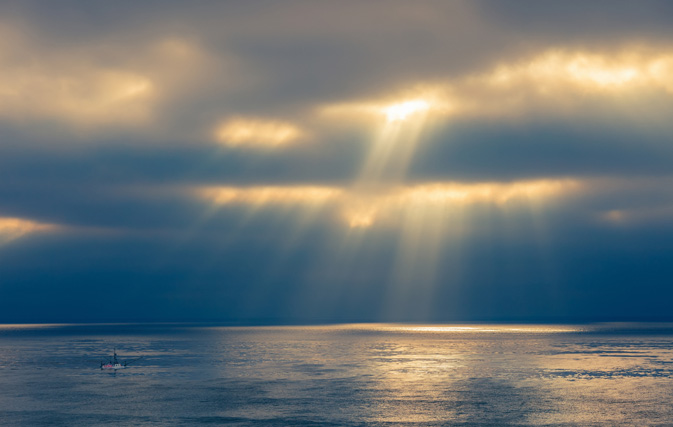SAN FRANCISCO — Strong gales and sheets of rain that knocked out electricity, flooded freeways and toppled trees in Northern California churned Thursday to a slide-prone Southern California bracing for its own beating.
“It’s a big storm, as we expected, and it’s headed south with very powerful winds and heavy rainfall,” said National Weather Service meteorologist Will Pi. Its strong winds felled a tree in southern Oregon, killing a homeless man, 40-year-old Phillip Crosby, who was sleeping on a trail.
Los Angeles should expect rain by the end of the day. Already, one apartment complex in a spot prone to mudslides in Riverside was evacuated. In the San Bernardino National Forest, lumber workers were loading concrete weights onto the stacks to keep them from blowing away, and piling sandbags in front of their shop doors to stave off floodwater.
“We’re getting ready this afternoon because it’s supposed to come in tonight,” said Jim Maddox, a worker at Rim Forest Lumber. “You expect the worse and hope for the best.”
The San Bernardino Mountains have been razed by wildfires and were already doused by a storm last week, making them particularly vulnerable to mud flows.
The Port of Los Angeles is ready to take on the storm, spokesman Phillip Sanfield said. “If heavy rains come, we’ve got construction crews to check on the docks; police can deal with flooding streets,” he said.
Denise George, who sells boats in Marina Del Rey, worried mostly about the wind.
“We make sure the halyards are secure, the canvasses are fastened so nothing gets blown off or opened up, so yes we are battening down the hatches for sure.”
Throughout the San Francisco Bay Area Thursday, waves slammed onto waterfronts, ferries were bound to their docks, some airplanes were grounded and many schools cancelled classes.
Gusting winds had motorists tightly gripping their steering wheels on the Golden Gate Bridge, where managers created a buffer zone to prevent head-on collisions by swerving cars.
The iconic suspension bridge is engineered to swing in cross winds, and engineers were standing by, but “the concern we have right now is more about vehicles,” spokeswoman Priya David Clemens said.
An elementary school student was trapped for about 15 minutes when an 80-foot tree fell on him in Santa Cruz. Rescuers with chain saws freed his arm and he was taken to a hospital in good condition.
Close to a quarter-million customers lost power in Northern California. Pacific Gas & Electric’s online map showed lights out over thousands of square miles, from Humboldt near the Oregon border to Big Sur on the Central Coast.
There were multiple accidents on flooded roads, and several trees crunched cars, but serious injuries reported. Many highways were closed, including California’s critical north-south Interstate 5 thruway.
“A lot of people took the day off,” said CalTrans spokesman Bob Haus. “That’s a good thing.”
This “Pineapple Express” storm blowing down the coast was unusual not only for its force, but for the warmth it brought to San Francisco, which was a balmy 60 degrees, about 5 degrees above average for this time of year.
“I know it’s a big storm supposedly, but they’re treating it like it’s a hurricane,” Malcolm Oubre said as he disembarked from the ferry he rode to his job as an administrative assistant in San Francisco.
Farther north, part of downtown Healdsburg was under two or three feet of water, and teenagers drove truckes through a flooded Safeway grocery store parking lot, trying to make waves for kayakers. Grocery shoppers, meanwhile, trudged through water to get supplies.
East Coast kids revel in snow days, but closures are rare on the West Coast, so the cancellation of Thursday’s classes was a novelty for dozens of schools in San Francisco, Oakland, Berkeley, and Santa Cruz County.
Surfers welcomed big, choppy swells _ the same high seas that sent towering sprays of water into the air as they crashed against waterfronts in San Francisco and Monterey on Thursday.
Ski resorts in the northern Sierra Nevada _ where schools and roads were closed by whiteout conditions and power outages _ were hoping for three feet of snow once it all settles. On Thursday, wind gusts up to 140 mph whipped through mountain passes, damaging homes in the Lake Tahoe area and grounding commercial airline flights in Reno, Nevada.
This has been a particularly wet storm, with rains expected to continue through Friday evening across much of California, and some rivers and creeks were rising fast.
California’s farmers needed the dousing, but would need more storms this size to even begin to recover from a record drought.
